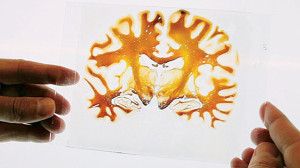Bob Sarles’ Sweet Blues: A Film About Michael Bloomfield (October 5 and 11) honors another soul seduced by the devil’s music. A nice Jewish boy from Chicago, Mike Broomfield lost — and found — himself in the blues of B.B. King, Elmore James and countless others. A guitar virtuoso at a young age, he found and rejected rock ‘n’ roll stardom in San Francisco. Sarles’ bittersweet one-hour film is a chronicle of well-deserved accomplishment and unsatisfied yearning, and is both a celebration of Bloomfield’s art and a depressing reminder of what we were deprived of by his death from an overdose at 37.
Sweet Blues is filled with Bloomfield’s lyrical yet stinging guitar and fond remembrances from Elvin Bishop (Paul Butterfield Blues Band), Nick Gravenites (The Electric Flag), Bob Weir, Jorma Kaukonen and, of course, Al Kooper, who you may not not know was slated to play guitar on “Like a Rolling Stone” until Bloomfield walked into the studio and tuned up. Kooper is the producer of the Bloomfield box set coming out in January that will include this film among its bounty of extras.

Ghost Town to Havana
“Bittersweet” barely begins to describe Ghost Town to Havana (October 6 and 8), the wrenching, long-in-the-works doc about a West Oakland youth team that, miraculously, is given a one-time trip to Cuba for intramural baseball and life lessons. Directed by Eugene Corr (Desert Bloom), whose dad was a legendary East Bay baseball coach, the film finds its narrative force and emotional center in the local team’s coach, a rock-solid source of commitment and inspiration until economic and domestic pressures crash his world. Like most of the local documentaries in the MVFF, Ghost Town to Havana leaves the viewer persuaded that a better world is altogether possible, albeit neither a piece of cake nor a pipe dream.

John Brown’s Body
If you demand high stakes from artistic endeavors, “John Brown’s Body” at San Quentin Prison (October 6 and 9) is as stratospheric, and gritty, as it gets. Theater director Joseph De Francesco took a huge chance enlisting eight hard cons in an ambitious staging of Steven Vincent Benet’s epic 1928 poem about the Civil War, racism, slavery and freedom. De Francesco’s doc alternates scenes from that 2002 production with contemporary interviews with the actors, providing a healthy helping of art alongside character revelations. In addition to expected (and gratifying) testimony that participating in a play made a difference to the inmates, “John Brown’s Body” allows the viewer to see the humanity in murderers.

Al Helm
Extending Bay Area doc makers’ traditional embrace of sociopolitical activism and global awareness, Connie Field (Have You Heard From Johannesburg?) transports us to the West Bank with Al Helm: Martin Luther King in Palestine (Oct. 12 and 13). A master of the historical doc, Field ventures for the first time into verité filmmaking, traveling with an American gospel choir collaborating with a Palestinian troupe on a production of Stanford professor and playwright Clayborne Carson’s Passages of Martin Luther King. Culture shock, artistic differences and, of course, the conditions of Palestinians under Israeli occupation propel this alternately disturbing and hopeful mosaic of art, politics and everyday life.

The Illness and the Odyssey
Berry Minott’s deeply entertaining and informative The Illness and the Odyssey (October 5 and 7) infuses a serious subject with a welcome dash of irreverence, notably through the onscreen appearance of the perpetually bemused Dr. Oliver Sacks. The film lucidly examines Guam’s 50-year attraction to humanitarian neurologists trying to crack the mystery of high rates of dementia, paralysis and tremors. The “winner” will presumably adapt the cure for Alzheimer’s and Parkinson’s patients, leading to a coronation of prizes, grants and Tonight Show appearances. The moral of the story: Science is not as easy as it looks.

Toxic Hot Seat
Science, and the lobbyists and corporations who use it, um, selectively, is likewise at the center of James Redford and Kirby Walker’s Toxic Hot Seat (October 5 and 12). Years ago, when Ronald Reagan was governor, the chemical industry succeeded in requiring furniture sold in California to contain flame retardants. Their effectiveness in the event of a fire is dubious, but there’s little doubt about the amount of carcinogens released in the house over time. (Now think about the cloud of noxious gases firefighters breathe when they enter a burning residence.) The doc makes a persuasive intellectual argument, backed with interviews with charismatic San Francisco firefighters who developed cancer.
This is not the complete list of the local docs in Mill Valley, believe it or not, and there’s not a dud in the bunch. Most, if not all, will play elsewhere in the Bay Area and/or on television in the coming months. But, frankly, why wait if you don’t have to?









